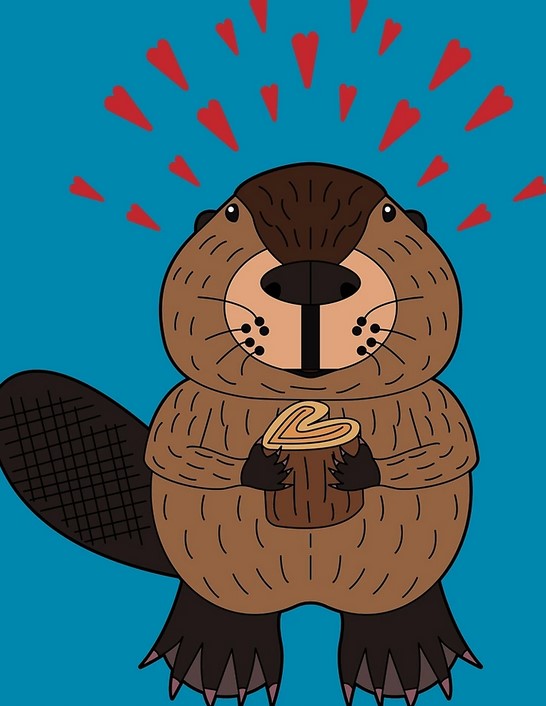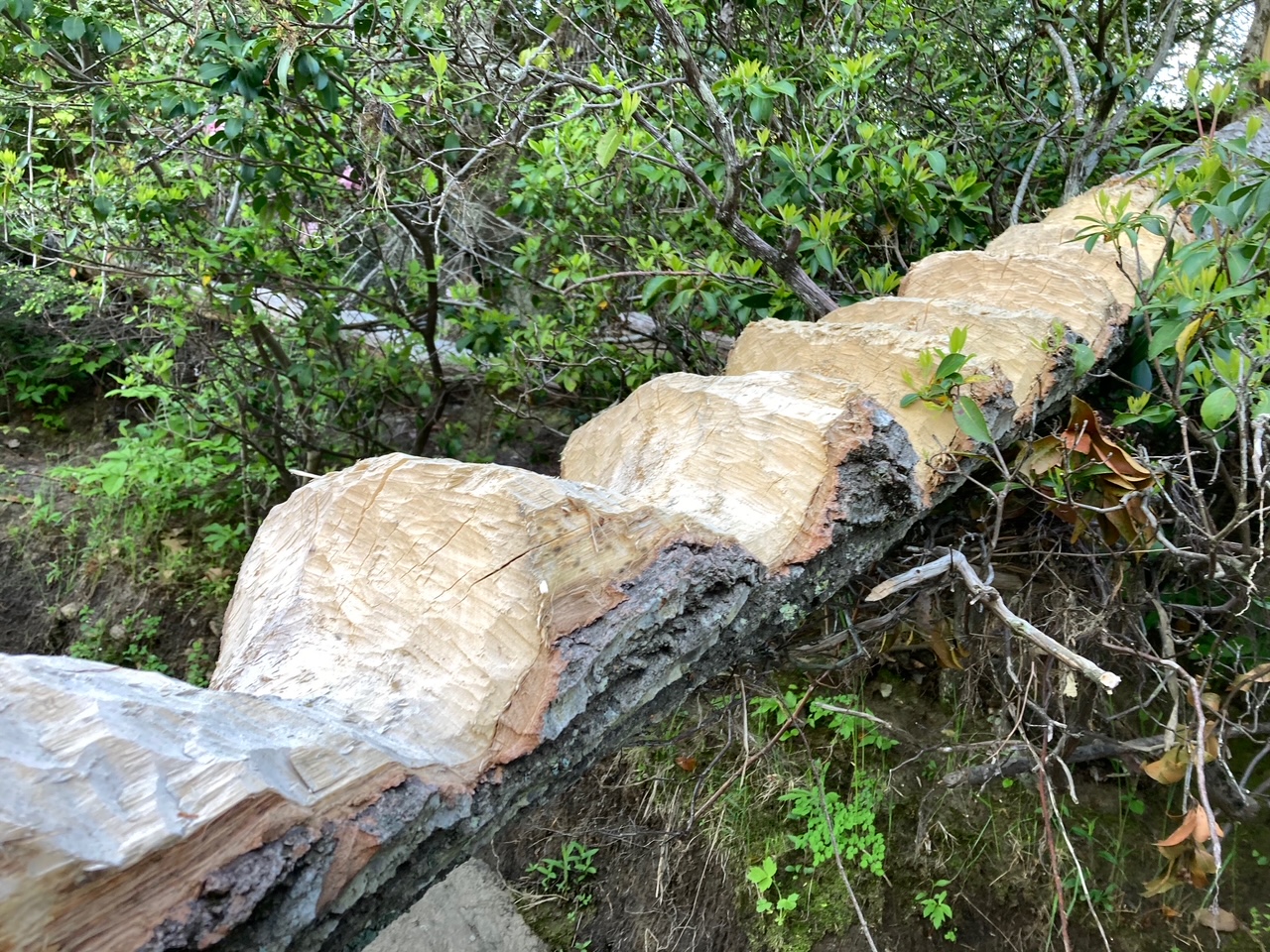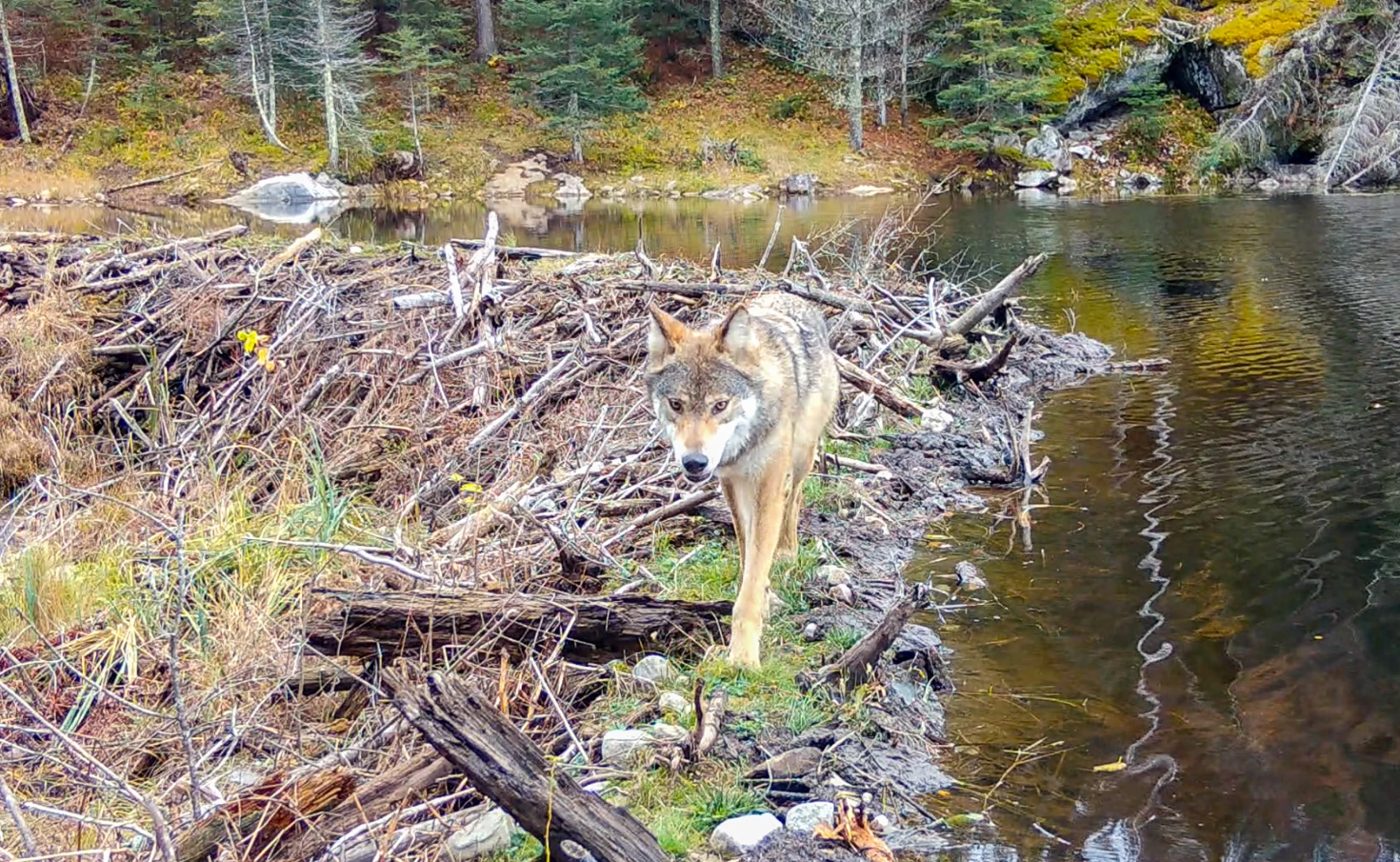I saw this article on Friday but I tucked it away to savor this morning. The funny thing is I didn’t even notice the author right away, just kept thinking, “Wow that’s true,” or “Wow what a great observation” and “Wow this author knows his beavers” until I got to the very end and thought OHHHHHHHHH that’s why!
I’m going to do my usual thing and highlight favorite parts but you should give yourself a holiday treat and go read the whole thing by clicking on the headline.
The Kawuneeche Valley is a picturesque swath of meadow and forest, some 15 miles long, that runs along the western edge of Rocky Mountain National Park. Through its heart flow the headwaters of the Colorado River, lifeblood of the American West, so diminutive this early in its 1,450-mile journey that, in many spots, you could wade it with ease. Stands of lodgepole pine rise above sweeping prairie; moose and elk elegantly browse the Colorado’s banks. The valley’s beauty, however, conceals a dark truth. The Kawuneeche is in an advanced state of ecological collapse — a reality that only reveals itself when you dig into its past.
A century ago, the Kawuneeche — whose name is derived from a word meaning “coyote creek” in the language of the Arapaho, who, along with the Ute and other Tribes, have long called the valley home — was a lush expanse of wetlands maintained by the diligent toothwork of North American beavers. Their massive dams ran to and fro, shunting the Colorado and its tributaries onto their floodplains and swelling them into ponds larger than football fields. Beaver-built wetlands irrigated towering willows, which in exchange furnished Castor canadensis with food and damming material, plant and rodent locked in symbiosis. Cutthroat trout teemed in pools, and boreal toads bred in wetlands. Little wonder that, in his 1913 book “In Beaver World,” Enos Mills, the naturalist who helped to found Rocky Mountain, deemed beavers the “original conservationist.” Protecting them, Mills declared, “would help keep America beautiful.”
Okay right there, that started to get my attention. I always love a good reference to Enos MIlls. Especially my favorite chapter of my favorite book about my favorite animal.
Over time, however, the Kawuneeche’s beaver-built utopia crumbled. Settlers sowed non-native grasses to feed livestock and dug ditches to drain wetlands. Hunters wiped out wolves and other predators, permitting voracious herbivores to later proliferate and mow down willows. And the National Park Service, having deemed beavers tree-felling, land-flooding nuisances, allowed trappers to kill more than 200 in the 1940s. Those and other stressors conspired to parch the once-wet Kawuneeche. “We’ve lost 90% of the water in this valley,” David J. Cooper, a senior research scientist emeritus at Colorado State University, told me.
Similar stories have transpired across the West, where few ecosystems, once afflicted, fully rebound. In Rocky Mountain, though, the Kawuneeche Valley Restoration Collaborative, or KVRC, a coalition that includes the Park Service and a host of partners, has made a multimillion-dollar bet that recovery is still possible. The members of the collaborative, which formed in 2020, have high and diverse hopes for the initiative. Saving the Kawuneeche will, they believe, enhance wildlife habitat, protect drinking water, filter out the sediment clouding downstream lakes and reservoirs, and defend the area against wildfire, among other benefits. “Restoring and protecting the headwaters of the Colorado River should be important to everyone,” said Kaci Yoh, philanthropy director at the Rocky Mountain Conservancy.
When a stream loses beavers it loses. Period.
To that end, KVRC is deploying a range of approaches, among them controlling invasive vegetation, planting willows and fencing riparian areas to keep out hungry herbivores. Most of all, the group is banking on one of the West’s most innovative restoration techniques: imitating — and then enlisting — beavers themselves. But reversing decades of ecological degradation is no easy task, even with the assistance of rodent engineers. Can the collaborative restore the Kawuneeche to its erstwhile glory — before it unravels entirely?
I usually appreciate a good BDA reference that values actual beavers but this was outstanding. Highlighting the misunderstood wolf story in Yellowstone, AND drawing attention to the real hero.
If the Kawuneeche Valley is a horror movie, its opening scene occurs more than a century ago, with the arrival of colonists. Yet the Kawuneeche mostly survived those early assailants; as recently as the 1990s, 10-foot-tall willows and multiacre beaver ponds endured. In recent decades, however, the valley’s deterioration has accelerated, fueled by the appetite of a gigantic interloper: moose.
Historically, Colorado was not totally unfamiliar territory to Alces alces, the largest member of the deer family. Nineteenth-century settlers noted its presence, and killed one near the future Rocky Mountain National Park. But those animals were likely transients from Wyoming, rather than members of an established population. Then, in 1978 and 1979, Colorado’s wildlife department captured two dozen of the half-ton ungulates in Wyoming and Utah and released them near Rocky Mountain — a cavalier decision made with flimsy environmental review, and at least partly to satisfy hunters.
Moose wiping out willow which wipes out beavers which dries the land and grows more grass which feed more moose to wipe out more willow.
I guess its not that rare to make conditions that reinforce what you need to survive.
To that end, KVRC is deploying a range of approaches, among them controlling invasive vegetation, planting willows and fencing riparian areas to keep out hungry herbivores. Most of all, the group is banking on one of the West’s most innovative restoration techniques: imitating — and then enlisting — beavers themselves. But reversing decades of ecological degradation is no easy task, even with the assistance of rodent engineers. Can the collaborative restore the Kawuneeche to its erstwhile glory — before it unravels entirely?
Oooh call on me! I know I know! We need more articles like this. Thoughtful reads that highlight that you can’t just throw in some BDAs and make everything better. It takes actual Bs which means you need actual willow which mean you need protection from elk and moose and cattle.
If browsing is the problem, one simple solution is to keep moose out. Cooper and de Silva Shewell led us to an exclosure, surrounded by nearly 8-foot-high wire mesh, that the Park Service erected in 2011 to protect 16 acres from willow-hungry ungulates. De Silva Shewell opened a rusted gate and walked into what she called the “secret garden.” We were immediately engulfed by a jungle of willows, many taller than me, so dense that we had to walk single-file. It was a tantalizing glimpse into the shrubby paradise that once blanketed the Kawuneeche. “Fences are not an ideal tool, but they’re effective for our purposes right now,” de Silva Shewell said — at least until the willows have grown high and thick enough that moose won’t immediately mow them down.
A certain semiaquatic rodent, too, seemed enthused. The exclosure straddled the Colorado, which a beaver colony had interrupted with a 40-foot dam woven from gnawed willow and alder — presently under construction, judging from its patina of fresh mud. Pooled water trickled around the dam’s flank, dampening sedges and soaking the earth to hydrate willows and expedite their growth.
Go beavers!
The lesson: fencing out moose helped, but it wasn’t enough to swiftly restore the Kawuneeche. Instead, KVRC would have to take dramatic action — and give the valley’s beleaguered beavers a more substantial boost.
Just fencing some willow or reintroducing a predator ain’t enough. How can we best help beavers help us?
Can the park continue on that bold path in the Kawuneeche? Park leaders have recognized the valley’s crisis; now its task is to communicate the problem, and the urgency of remediating it, to the public. As Aldo Leopold, a guy who knew something about the harms of excessive ungulates, famously put it, “One of the penalties of an ecological education is that one lives alone in a world of wounds.” The implication of Leopold’s lament is that environmental degradation is both subtle and ubiquitous; once you’ve seen it, you can’t ignore it. Yet wounds, once inflicted, can still heal — particularly when beavers are involved in the operation.
Oh Ben and Beavers! You had me at “If you build it.”













































